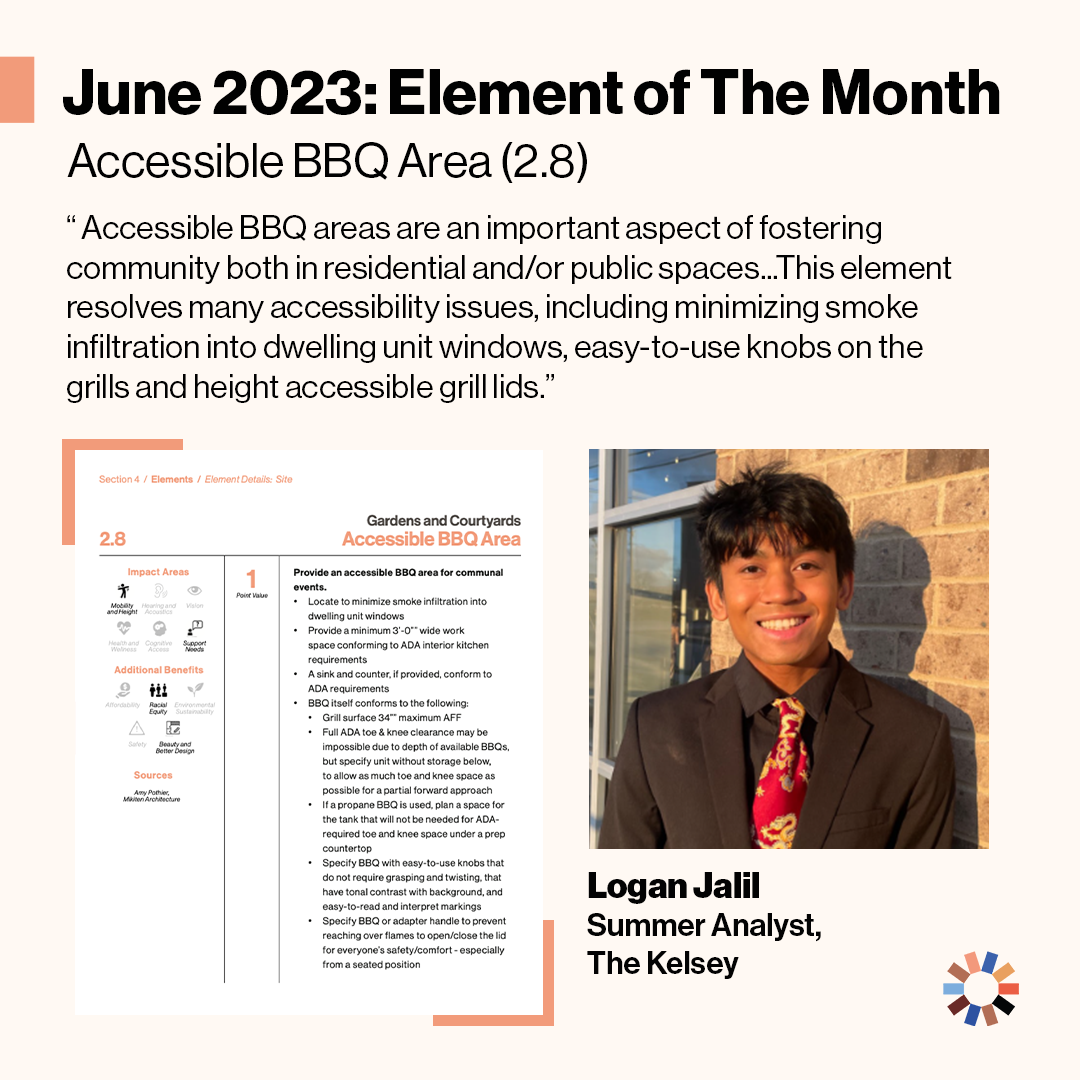The Housing Design Standards for Accessibility and Inclusion equip designers, builders, and developers with guidelines and frameworks for disability-forward housing creation. It highlights cross-disability accessibility and design decisions that are anchored in inclusion. Each month we feature one of our partners and the Element they’re most excited about.
Logan Jalil | Summer Analyst | The Kelsey
This month, we welcomed American Association of People with Disabilities (AAPD) Summer Analyst Logan Jalil. Logan joins us virtually from Nashville, Tennessee where they studied at Belmont University. Without hesitation, they identified their favorite element for its combination of hospitality, potential community building and a love of the outdoors. Logan’s element, Accessible BBQ Area, ensures that all residents can safely enjoy outdoor space with grills made with their needs in mind. They note that while BBQ Areas are not a requirement for independent living, this element embraces the goal of inclusivity, togetherness and interdependent community by encouraging residents and their guests to socialize around the grill.
Name of Element: Accessible BBQ Area (2.8)
Description: Provides an accessible BBQ area for communal events & specifies slip resistant pavers when used in BBQ areas.
Design Category: Gardens and Courtyards
Impact Area(s): Mobility and Height, Support Needs Additional Benefit(s): Safety, Better Beauty & Design
Why is this element important to you, personally or for the project?
Many apartment complexes have BBQ areas that are not easily usable by people with disabilities. Accessible BBQ areas are an important aspect of fostering community both in residential and/or public spaces. The main issue is that disabled people are often left out due to the inaccessibility of the grills themselves. This element resolves many accessibility issues, including minimizing smoke infiltration into dwelling unit windows, easy-to-use knobs on the grills and height accessible grill lids.
How would you explain this element to a 2nd grader?
This element encourages people with mobility or height (impact areas) disabilities to be outside with other residents and/or family, use and enjoy accessible BBQ grills, and celebration of togetherness and community.
How did this accessibility element change (for the better) the overall project (optional)?
While a BBQ grill is not a necessity for living independently, this element does embrace the goal of going beyond the baseline requirements and creating a community in a person-centered residence. By having an accessible outdoor space with appliances specifically suited for those spaces, residences become welcoming communities where people of all abilities are able to grill safely. Generally, this element is designed to create a safer BBQ setup for everyone.
What recommendations would you make to someone designing a disability-forward housing project (related to the design standards)?
Always overcompensate for safety for people with and without disabilities! Spaces should be designed to allot for more than enough space for gatherings to be safe, comfortable and maneuverable. For example, ADA regulations require a wide workspace that conforms to interior kitchen requirements. When designing an area that is prone to accidents (like BBQ grills), safety should be the #1 priority.
